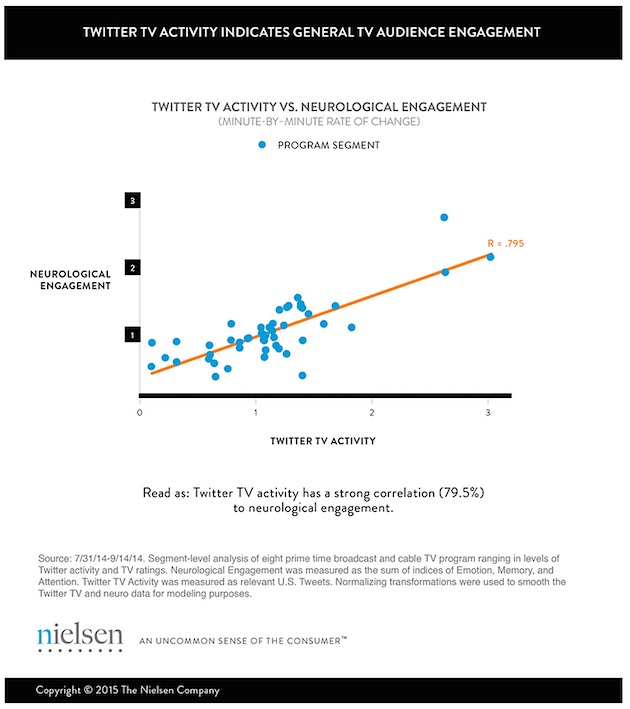Does a high volume of tweets about a TV show indicate the viewing audience is more engaged while watching the programming?
To find out, Nielsen recently analyzed Twitter activity (i.e., tweets) around live airings of eight prime time broadcast and cable TV shows. The researchers also monitored the brain activity of 300 viewers in the United States as they watched those episodes. Minute-by-minute Twitter activity and brain activity were then examined side-by-side across segments of each program to understand whether increases and decreases in Twitter activity were correlated with viewers’ neurological response to the programming.
Changes in Twitter activity are indeed strongly correlated (79.5%) with neurological engagement, Nielsen found.
In other words, increases and decreases in the number of tweets about a program map to how engaged TV audiences are with the programming itself (both overall and minute-by-minute as the show unfolds).
Emotion, memory, and attention are the specific neurometrics tied to increased Twitter activity, indicating that the TV content is engaging viewers through multiple psychological processes.
About the research: The report was based on data from an analysis of Twitter activity (i.e., tweets) around live airings of eight prime time broadcast and cable TV shows. The researchers also monitored the brain activity of 300 viewers in the United States as they watched these episodes.





